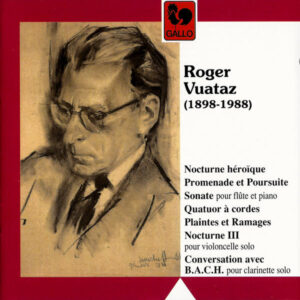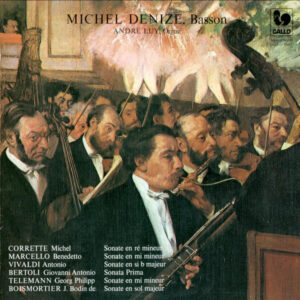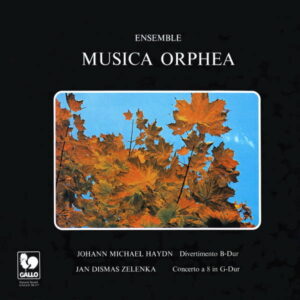Extraits / Excerpts
CAROLINE BOISSIER-BUTINI : CONCERTO NO. 6 "LA SUISSE" – BERNER KAMMERORCHESTER
First World Recording
Caroline BOISSIER-BUTINI : Concerto No. 6 en sol pour piano, flûte obligée et cordes, « La Suisse » – Pièce pour l’orgue – Sonate pour piano No. 1 – Divertissement avec rondo à la polacca pour piano, clarinette et basson.
Eva-Maria Zimmermann, Piano – Regula Küffer, Flute – Nicoleta Paraschivescu, Organ – Babette Dorn, Piano – Didier Puntos, Piano – Michel Westphal, Clarinet – Catherine Pépin, Bassoon – Berner Kammerorchester, Matthias Kuhn, Conductor.
The 6th piano concerto, La Suisse
Caroline Boissier-Butini’s 6th concerto for piano and flûte obligée, which she herself entitled La Suisse, was inspired by folksongs; the sources do not allow us to date the concerto precisely, but we can assume that it was composed before 1818. A return to folk melodies was entirely in keeping with the times; Beethoven, for example, used such themes, as did Carl Maria von Weber, who was born in the same year as Boissier-Butini. Her innovation, however, is to quote the “ranz des vaches”, the musical themes that would have awakened in her contemporaries an archetypal sense of Switzerland.
The opening of the first movement (Allegro) is kept consciously simple. After a central section, with a virtuosic piano part and audacious modulations, the opening themes reappear at the end of the movement in a slightly varied form. The slow middle movement (Andantino), the second theme of which is a ”ranz des vaches”, such as the one made legendary by Rousseau is striking for its rich colours and rhythms, in particular the interactions between piano, flute and bass voices. A Presto draws the piece into the last movement (Rondo), where Caroline Boissier varies the theme six times in different instrumentation, and modulates the piano’s solo passages cleverly, prefiguring the spirit of late 19th-century salon music.
While the piano part is extremely virtuosic, the relatively simple orchestration should mean the piece finds its way into the repertoire of youth or amateur orchestras.
[show_more more=”Show more” less=”Show less”]
The first piano sonata
In the Geneva city library lie the manuscripts of three piano sonatas by Caroline Boissier-Butini. Where the second and third seem still sketchy in places, the first appears the most thoroughly worked out. But even here, substantial editorial work was necessary before the piece was playable. In addition to often indistinct handwriting and incomplete accidentals, suggesting this was a copy for her own use, the lack of dynamics and phrase markings posed a great challenge. The sonata form of the first piece is a clear expression of the composer’s engagement with Beethoven and Mozart as role models. Her harmonies, by contrast, are unconventional; in the first movement, in particular, she experiments freely with the chords, and makes unexpected harmonic disjunctions. The improvised character of certain transitional passages is expressed here. In this piece, too, the composer creates a rustic atmosphere; in the second movement, after an introverted opening theme and a contemplative middle section reminiscent of a chorale, the final motive lends a bucolic charm to the ending.
The idyllic, peaceful atmosphere is interrupted by the opening theme of the third movement: subliminal unrest makes itself felt through syncopated chords. The surprise in learning to play this piano sonata is the wide intervals, not at all suitable for what we imagine as “the delicate hands of a lady”. The voice leading is also unusual, becoming clear only through a generous use of finger pedal – an open field of experimentation for creative interpreters.
The Divertissement avec rondeau à la polacca
Titled in manuscript – probably an autograph – Divertissement avec rondeau à la polacca, this piece consists of two independent themes with variations. The possibility that a third movement was planned should not be ruled out.The Divertissement is the only piece of chamber music in Caroline Boissier’s oeuvre with the complete materials extant. Scored as it is for clarinet and bassoon, it is exceptional; the composer may have written it for a particular occasion or for wind players she knew. The bassoonist Wolff Hauloch and the clarinettist Rostan, who regularly performed together in various ensembles, are known to have been in Geneva around 1815.
The two folk-style themes on which the two- movement Divertissement is based have not been identified as well-known songs from the collections of songs published in Switzerland in the 18105. They may be two of the ”airs nationaux” that Caroline Boissier-Butini in her letters often says she has composed. Both her engagement with folk tunes and the choice of a Polonaise confirm that Boissier-Butini was thoroughly in tune with the musical fashions of her day.
The Polonaise in particular shows Caroline Boissier-Butini’s facility in creating an atmosphere through instrumentation: the recurring theme at one point features rhythmic trills reminiscent of a musical automaton, while at another point the piano’s arpeggios provide a guitar-like accompaniment.
Le ranz des vaches s’invite à la salle de concert
Les œuvres présentées sur ce CD-portrait reflètent plusieurs facettes de la créativité de Caroline Boissier-Butini : la musique d’agrément, avec le Divertissement et le concerto pour piano et flûte obligée La Suisse ; la musique « sérieuse », avec la sonate no 1, ainsi que la musique patriotique, avec la Pièce pour orgue. Les mélodies à caractère populaire forment le fil rouge, de l’ambiance pastorale de la fin du deuxième mouvement de la sonate a la citation intégrale du ranz des vaches gruérien dans le concerto en passant par l’hymne genevois Cé qu’é lainô dans la Pièce pour l’orgue.
Quant aux thèmes du Divertissement, faute d’avoir pu être identifiés, ils pourraient être de la plume de Caroline Boissier-Butini elle-même, car dans ses lettres de cette période, elle fait à plusieurs reprises allusion à des « chants nationaux » qu’elle a composés. Ces quatre pièces sont les rares témoins d’une époque encore peu documentée de l’histoire de la musique en Suisse et les enregistrements constituent des premières mondiales, servies avec engagement par des interprètes de qualité : Babette Dorn, Didier Puntos et Eva Maria Zimmermann piano ; Nicoleta Paraschivescu, orgue ; Regula Küffer, flûte ; Michel Westphal, clarinette ; Catherine Pépin, basson ; Matthias Kuhn, chef d’orchestre.
Irène Minder-Jeanneret, Revue Musicale Suisse
Frühromantische Musikperlen
Es gibt sie noch, die wundersamen Entdeckungen der Musikgeschichte. Im Rahmen einer Dissertation ist der Nachlass einer nahezu vergessenen Musikerin aus Genf gefunden worden. Zutage gefördert wurden Manuskripte mit frühromantischen Musikperlen. Caroline Boissier-Butini — sie lebte von 1786 bis 1836 — war zu Lebzeiten eine gefeierte Pianistin. In ihre Musik hat sie oft Schweizer Lieder eingewoben.
DRS 2 und das Label Gallo haben eine CD mit der 1. Klaviersonate, Orgelstücken, einem Divertissement und dem 6. Klavierkonzert (am Piano: Eva-Maria Zimmermann) mit obligater Flöte veröffentlicht. Dieses Werk mit dem Beinamen «La Suisse» versprüht Lokalkolorit par excellence. Demnächst wird anhand von Tagebüchern, Briefen und Reisenotizen die Biografie von Boissier-Butini veröffentlicht; bestimmt ein spannendes und horizontöffnendes Ereignis.
André Scheurer, Radio Swiss Classic
[/show_more]
- Categories
- Composers
- Interprets
- Booklet












